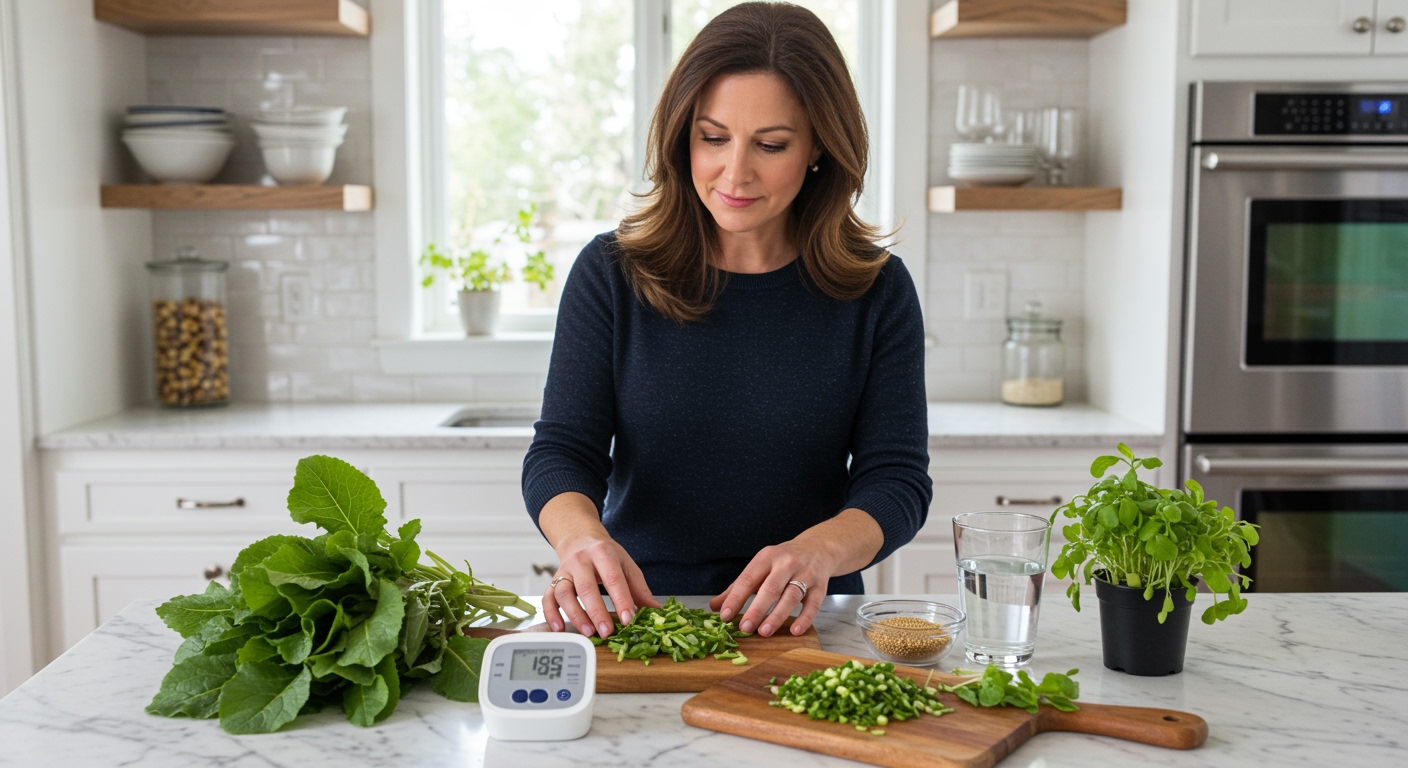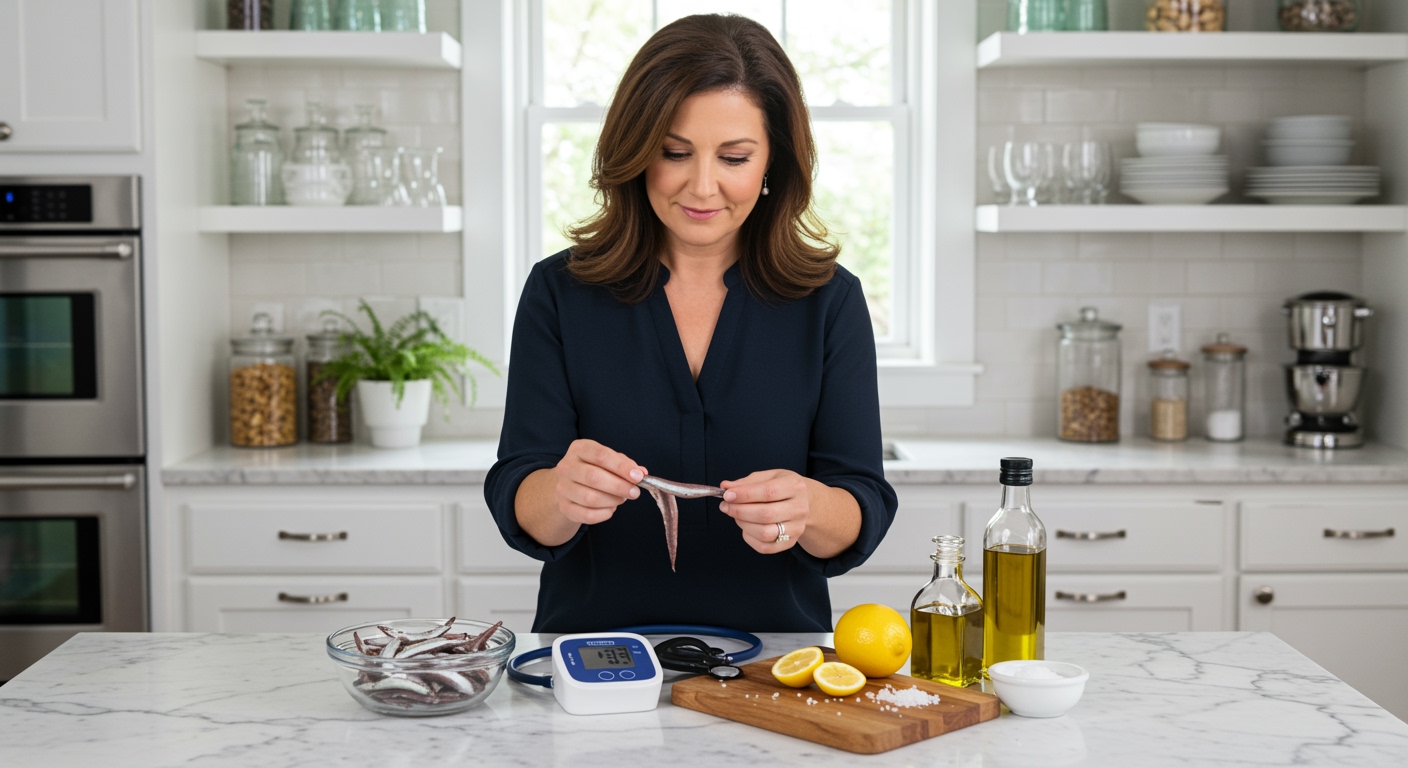✪ Key Takeaway: Wild mustard may help lower blood pressure through potassium and nitrates, but evidence remains limited.
Introduction
You walk through your backyard and spot those familiar yellow flowers growing wild near your fence.
Maybe you have heard whispers about wild mustard being some kind of natural blood pressure remedy and wonder if this common weed could actually help your cardiovascular health.
Hi, I am Abdur, your nutrition coach and today I am going to explain whether wild mustard can truly lower your blood pressure and what the science actually says about this interesting plant.
What Makes Wild Mustard Special For Blood Pressure?
Wild mustard contains several bioactive compounds that researchers believe might influence blood pressure levels.
The most important of these compounds are potassium, nitrates, and various antioxidants that work together in your cardiovascular system.
Potassium acts as a natural vasodilator, which means it helps relax the smooth muscles in your blood vessel walls.
When these muscles relax, your blood vessels widen and blood flows more easily through them.
This reduced resistance means your heart does not have to work as hard to pump blood throughout your body.
The nitrates in wild mustard convert to nitric oxide in your body through a complex enzymatic process.
Nitric oxide signals your blood vessels to relax and expand, creating a natural blood pressure lowering effect that can last for several hours after consumption.
✪ Fact: Wild mustard contains about 384mg of potassium per 100g serving, which is roughly 8% of your daily needs.
How Does Your Body Process Wild Mustard Compounds?
When you eat wild mustard greens, your digestive system breaks down the plant fibers to release the active nutrients into your bloodstream.
Your small intestine absorbs the potassium quickly, usually within 30 to 60 minutes after eating.
This potassium then travels through your blood to reach your kidneys, where it helps regulate sodium balance and fluid retention.
The nitrates follow a different pathway through your body.
Beneficial bacteria in your mouth convert these nitrates into nitrites when you chew the mustard greens thoroughly.
Your stomach acid then transforms these nitrites into nitric oxide, which enters your bloodstream and begins working on your blood vessels within hours.
The antioxidants in wild mustard, including vitamin C and various flavonoids, help protect your blood vessels from oxidative damage that can contribute to high blood pressure over time.
✪ Pro Tip: Chew wild mustard greens slowly to maximize nitrate conversion by oral bacteria.
What Does The Research Actually Show?
The scientific evidence for wild mustard specifically lowering blood pressure remains quite limited compared to other leafy greens.
Most studies focus on cultivated mustard greens or mustard seeds rather than the wild varieties you might find growing naturally.
However, research on similar cruciferous vegetables suggests that the compounds found in wild mustard could have blood pressure benefits.
A study published in the American Journal of Clinical Nutrition found that people who ate more potassium-rich leafy greens had lower systolic blood pressure readings.
Another research paper showed that nitrate-containing vegetables could reduce blood pressure by 3 to 5 mmHg in people with normal or slightly elevated readings.
The challenge with wild mustard specifically is that its nutrient content can vary significantly based on soil conditions, growing season, and plant maturity.
This makes it difficult for researchers to standardize studies and draw definitive conclusions about its blood pressure effects.
✪ Note: Most blood pressure research focuses on cultivated greens rather than wild varieties.
Are There Any Risks Or Side Effects?
Wild mustard is generally safe for most people when consumed in normal food amounts.
However, you need to be absolutely certain you are identifying the plant correctly before eating it.
Many plants look similar to wild mustard, and some can be toxic if consumed.
People taking blood pressure medications should be cautious about adding large amounts of wild mustard to their diet.
The potassium content could potentially interact with certain medications, especially ACE inhibitors or potassium-sparing diuretics.
Wild mustard also contains oxalates, which can contribute to kidney stone formation in susceptible individuals.
If you have a history of kidney stones or kidney disease, you should limit your intake of high-oxalate foods including wild mustard greens.
✪ Pro Tip: Always consult your doctor before using wild plants medicinally, especially if you take medications.
How Should You Use Wild Mustard For Best Results?
If you decide to try wild mustard for blood pressure support, start with small amounts to see how your body responds.
Young leaves tend to be more tender and less bitter than mature ones, making them easier to incorporate into your meals.
You can add fresh wild mustard leaves to salads, smoothies, or sauté them lightly with other vegetables.
Cooking wild mustard greens can reduce some of the bitter compounds while preserving most of the beneficial nutrients.
A reasonable serving size would be about one cup of fresh leaves or half a cup of cooked greens, consumed 2 to 3 times per week.
Remember that wild mustard should complement, not replace, other proven blood pressure management strategies like regular exercise, stress reduction, and maintaining a healthy weight.
The most important thing is to view wild mustard as part of an overall heart-healthy eating pattern rather than a magic bullet for blood pressure control.
✪ Fact: Young wild mustard leaves are less bitter and more nutritious than older, tougher leaves.
The Bottom Line
Wild mustard contains compounds that could theoretically help lower blood pressure, but the scientific evidence specifically for this plant remains limited and inconclusive.
Nature provides many tools for health, but wisdom lies in using them correctly and safely, and wild mustard should be viewed as a potential complement to proven blood pressure management strategies rather than a standalone solution.
I would love to hear about your experiences with wild edibles or any questions you might have about natural approaches to blood pressure management, so please share your thoughts in the comments section below.
References
At NutritionCrown, we use quality and credible sources to ensure our content is accurate and trustworthy. Below are the sources referenced in creating this article:
- Healthline: Mustard Greens Nutrition
- WebMD: Health Benefits of Mustard Seed
- Indian Express: Benefits of Mustard Seeds
- PMC: Nutritional and Health Benefits of Mustard





